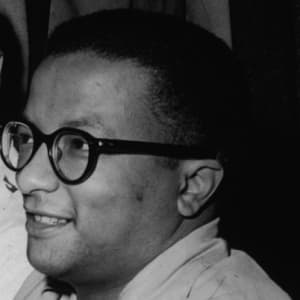
Frederick Patterson
Frederick Patterson was the first African American automobile manufacturer in the United States.
Synopsis
Frederick Douglas Patterson was born in 1871, the son of an ex-slave, Charles Richard Patterson, who had escaped from Virginia to Ohio and eventually owned a carriage business. After a short career as a teacher, Frederick joined his father and transitioned the company from building carriages to building automobiles. Eventually, competition from large Detroit auto manufacturers forced Patterson to build trucks and buses, and for a time the company prospered. The stock market crash and Patterson’s death in 1932 caused the company to close.
Family History
Named for the noted abolitionist Frederick Douglass, Frederick Douglas Patterson was born in 1871, the second of four children. His father, Charles Richard Patterson, was an ex-slave who, in 1865, had escaped from Virginia and migrated to Greenfield, Ohio, a well-known way station along the Underground Railroad. Charles found work as a blacksmith at a local carriage company, Dines and Simpson, and married Josephine Utz, a biracial woman of German decent.
Early Life
By the time Frederick was born, Charles was foreman at a highly successful carriage manufacturer, J.P. Lowe & Company. After being awarded several patents, Charles became a partner, and in 1893 he bought out Lowe’s share and renamed the company C.R. Patterson & Son, with his younger son, Samuel, joining his father.
Meanwhile, the Pattersons saw to it that their children were well educated. Frederick graduated from Greenfield High School in 1888 and went on to college at Ohio State University. He played football his junior year, becoming the first African American to make the team, but left in his senior year to teach high school in Louisville, Kentucky. In 1897, Samuel became ill, and Frederick returned to Greenfield to help with the carriage business, now named C.R. Patterson & Sons. Samuel died in 1899 and Fredrick took on an increasing role. On September 11, 1901, Frederick married Betty Estelline Postell.
An Innovative Entrepreneur
During this time, the world was on the brink of a transportation revolution. Several inventors and entrepreneurs in the United States and Europe were developing “horseless carriages” powered by internal combustion engines. Frederick saw the emerging trend and developed several prototypes of the early automobile. Charles Patterson died in 1910, and by 1915 Frederick reorganized the company under the name Patterson-Greenfield Automobile, the first African American automobile company. According to advertisements, there were two models: a two-door touring car and a four-door roadster. The cars were run by a 30-horsepower, 4-cylinder engine and included a full floating rear axle, a suspension that sat on cantilever springs, electric starting and lighting and a split windshield for ventilation. The cost was around $850.
Over the next five years, the company produced approximately 150 vehicles but experienced steep competition from Henry Ford’s massive assembly lines, which by that time were building Model Ts. Seeing other opportunities, in 1920 Frederick Patterson reorganized the business again into the Greenfield Bus Body Company, and began building buses, trucks and other utility vehicles on Ford, Chevrolet and Dodge Brothers truck chassis.
Later Years
Frederick Patterson was a member of several fraternal organizations, including the Freemasons and served as vice president of the National Negro Business League when Booker T. Washington was its president. He supported the Republican Party, serving as a delegate to the Ohio Republican Party caucus and helping turn out the African American vote. In 1920, he worked on Warren G. Harding’s presidential campaign and served as an alternate delegate at the 1924 Republican Convention.
The Greenfield Bus Body Company was able to make the transition from wood to metal body construction but lacked the capital to compete on a national scale. The stock market crash of 1929 dealt a severe blow to the company, and when Frederick Patterson died on January 18, 1932, it was struggling to survive. His son, Postell, kept the company going until 1939, when it closed its doors forever.



